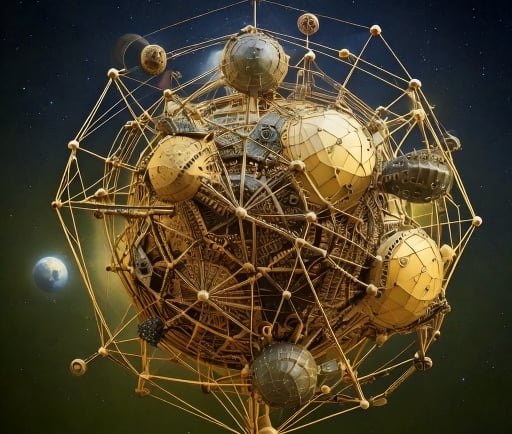The Functions of Lagrangian Mechanics


Introduction to Lagrangian Mechanics
Lagrangian mechanics provides a powerful framework for analyzing the motion of systems composed of discrete particles. Developed by Joseph-Louis Lagrange in the 18th century, this approach focuses on the principles of energy—specifically kinetic and potential energy. As a result, Lagrangian mechanics simplifies the complexity in the analysis of mechanical systems with finite degrees of freedom, allowing for intuitive solutions to complex problems.
Defining the Lagrangian
The Lagrangian is a function that embodies the dynamics of a particle or system, often denoted as L. It is expressed as the difference between the kinetic energy (T) and potential energy (V) of the system, formulated as L = T - V. By employing this function, one can derive equations of motion through the principle of least action, which claims that the path taken by a particle is the one for which the action is minimized.
Applications of Lagrangian Mechanics
One of the primary functions of Lagrangian mechanics is its utility in solving complex multi-particle systems. Unlike traditional Newtonian mechanics, which deals directly with forces, the Lagrangian method allows scientists to focus on energy changes, making it remarkably versatile for various applications, from classical mechanics to modern physics scenarios.
Lagrangian mechanics is especially beneficial in fields such as robotics, aerospace, and even quantum mechanics. Through this framework, one can derive critical insights into motion trajectories, stability, and interactions within systems comprised of multiple bodies. The equations generated through the Lagrangian yield not only the positions of particles but also their velocities and accelerations over time.
Furthermore, the application of Lagrangian mechanics extends beyond simple particle systems. It can adeptly handle constraints imposed on motion, such as in systems involving circular paths or other geometric limitations. By incorporating constraints, Lagrangian mechanics accurately reflects real-world systems that could not be tackled as effectively using conventional methods.
In conclusion, understanding the functions of Lagrangian mechanics is essential for anyone involved in advanced physics or engineering disciplines. By leveraging the properties of the Lagrangian, researchers and practitioners can not only streamline problem-solving processes but also unveil deeper insights into the fabric of motion and energy interactions. This formalism stands as a testament to the enduring principles laid down by Lagrange, continuing to illuminate the workings of mechanics to this day.
